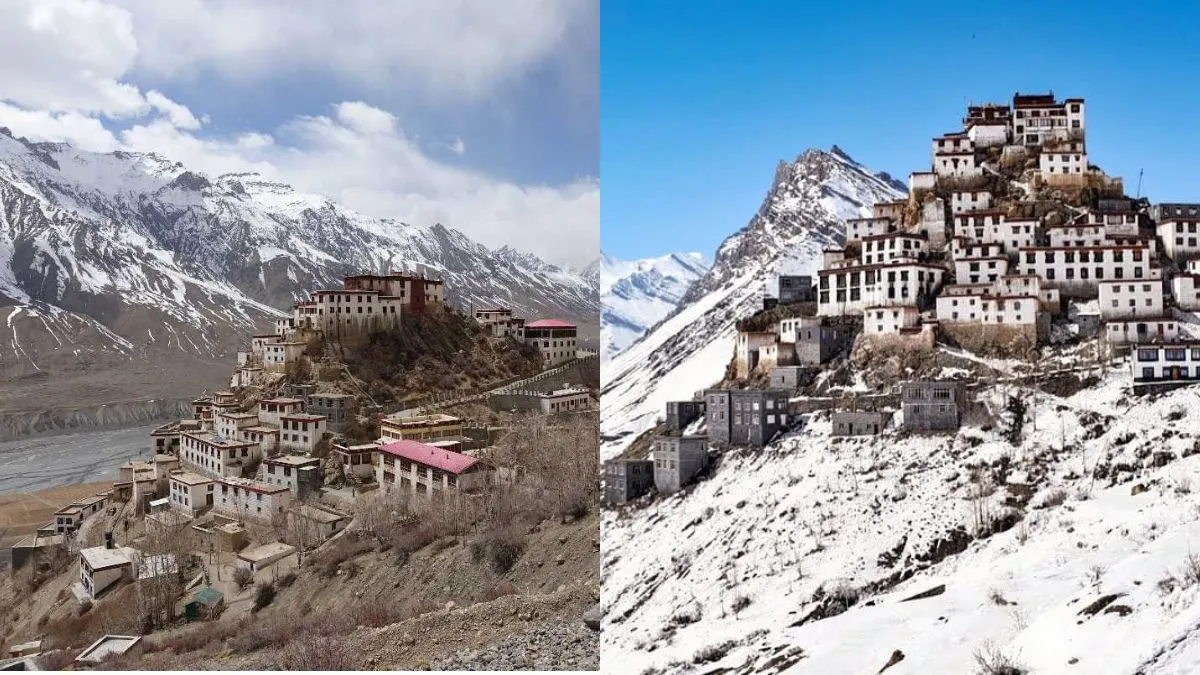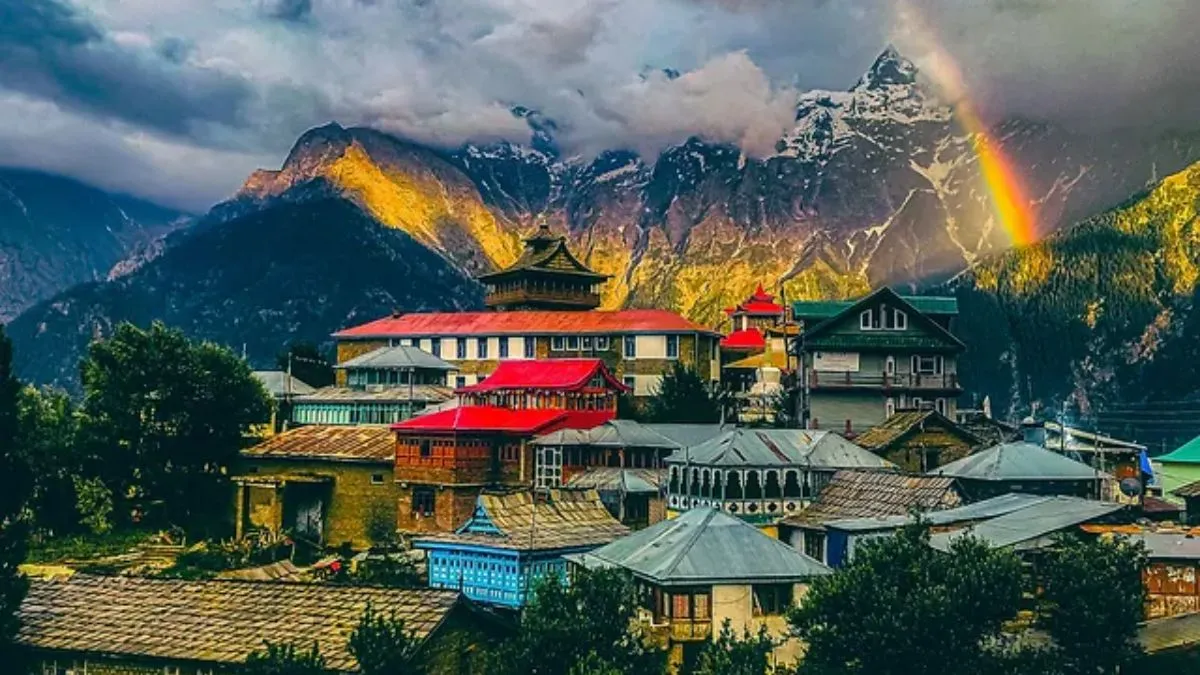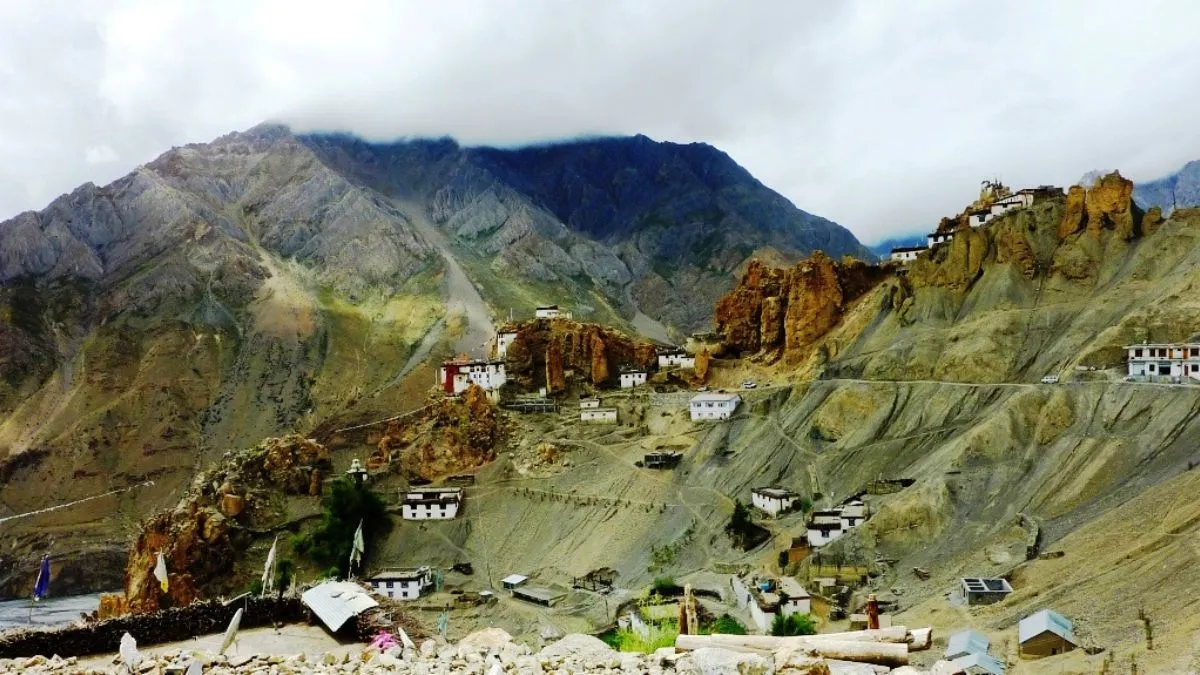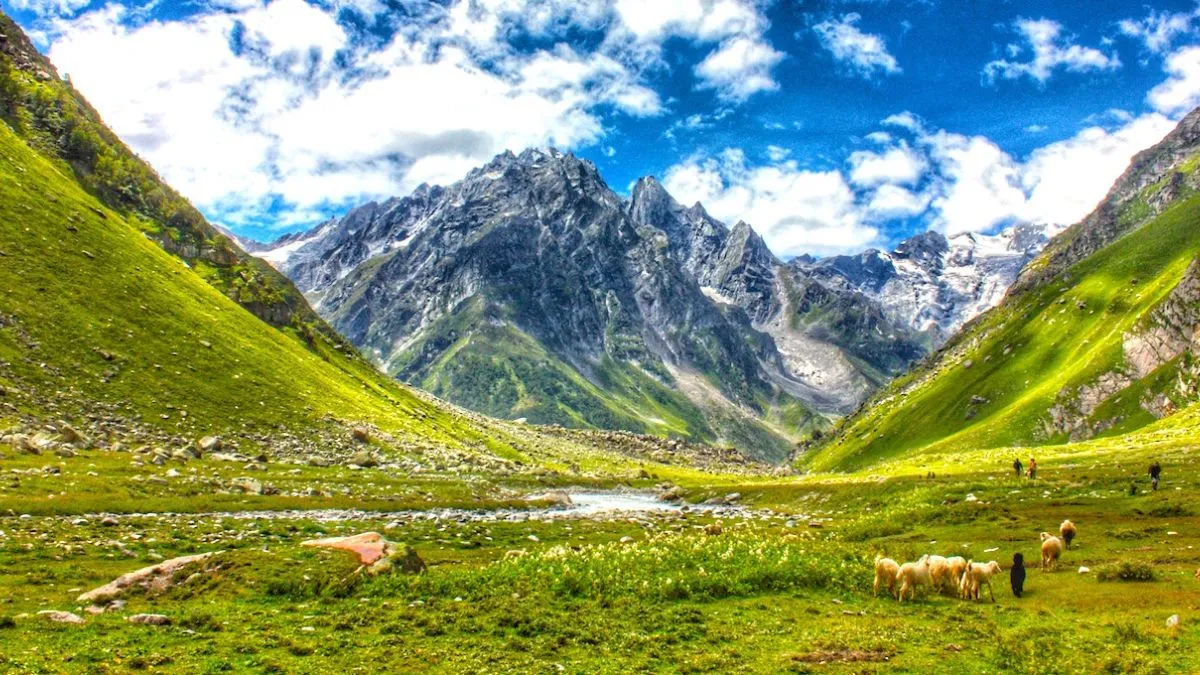Are you looking for an unforgettable adventure trip in lndia? What can be a better option then going on for Delhi to Spiti road trip. Spiti valley is situated in Himachal the northern part of India and It is called “Little Tibet” for its stark landscapes, ancient monasteries and serenity which makes this place a heaven for adventure lovers and nature enthusiasts. Spiti is at an average height of 13,054 ft and is a cold desert mountain valley in the Himalayas. It is surrounded by snow-capped mountains and dotted with tiny villages and ancient Buddhist monasteries. Spiti valley tour is very mesmerizing because of its geographical landscapes and cultural diversity.
Delhi to Spiti valley trip is call of unlimited adventure as you will pass through some of the most beautiful landscapes of Himachal. You can choose a route via Shimla or Manali with each having its own set of attractions and challenges. In this Spiti Valley tour guide we will cover everything you need to know to plan your trip from Delhi to Spiti valley, including itineraries, best time to visit and top places to see. You can go for tempo traveller hire in Delhi for road trip to Spiti Valley at most affordable rate along with the best facilities and services.
Delhi to Spiti Valley Route
Route 1: Delhi – Shimla – Spiti

Shimla – Narkanda – Rampur – Kalpa – Nako-Giu Village – Tabo Village – Dhankar – Pin Valley – Kaza
Starting from Delhi, this route takes you through Chandigarh, Shimla, Kinnaur Valley, Kalpa, Dhankar and finally Spiti Valle. This route is best during the early season (April to June) as it is more reliable and open when the Manali route might still be closed due to snow. The road is better and safer for those who are not used to high altitude driving.
Also Read: Best Ways to Travel in North India
Route 2: Delhi – Manali – Spiti
Manali – Solang Valley – Rohtang Pass – Gramphu – Batal – Chandratal – Kunzum Pass – Losar – Kaza – Dhankar – Tabo
This is a more difficult route that passes through high mountain passes like Rohtang Pass and Kunzum Pass. Manali route is open from June to October when snow melts. This route has amazing views of Lahaul Valley and thrilling driving experience on rough roads. But high altitude and rough roads are not suitable for amateur drivers.
Delhi to Spiti Valley Distance
Via Shimla: The journey is a total of 811 km and takes around 20-22 hours of driving time that is spread over 3 days. First day by covering Delhi to Shimla distance of 343 Km. Second day by covering Shimla to Kalpa distance of 222 Km and third day by covering Kalpa to Spiti Valley distance of approximately 226 Km. You can book Delhi to Shimla tempo traveller for a trip with friends or family and then further proceed with Spiti Valley tour from Shimla.
Via Manali: The total distance of this route is 720 km with a total driving time of 17 to 18 hours that you can complete in 2 days. Your stoppage will be after covering Delhi to Manali distance of 502 Km and next day covering Manali to Spiti Valley Distance of 218 Km.
How to Reach Spiti Valley from Delhi: Best Route
For Beginners: It is better for first timers to take the route through Shimla since the road is nicer and the turns are gentle. This route lets you acclimatize better and lessens incidence of mountain sickness.
For Adventure Seekers: If you seek more adventure consider taking the Manali route instead. This route boasts scenic beauty with beautiful landscapes as well as crossing over high mountain passes. Only experienced high altitude drivers/riders should attempt it though.
It is better to choose the best transportation available along with the professional and experienced driver. So, if you are planning Spiti Valley road trip with your group there is no better option than booking tempo traveller on rent.
Explore 7 Best road trips in India
Best Time to Visit Spiti Valley
Best time to visit Spiti Valley is from late May to early October when the weather is mild and roads are open. During this period the valley is alive with green fields, wildflowers and clear skies. Summer (May to June) is best for most travelers as the weather is pleasant and roads are open. Monsoon (July to August) can be tricky as there are landslides on approach roads. Autumn (September to October) is pleasant and less crowded with the landscape turning autumnal. Winter (November to April) is only for experienced travelers as it is too cold and roads are closed.

Spiti Valley tour plan from Delhi
Check out the below mentioned detailed Itinerary trip:
Day 1: Shimla to Sangla
This scenic route takes you through pine forests, apple orchards and fields. Sangla is located in the Baspa Valley and is famous for its natural beauty and peaceful environment. The Shimla to Sangla distance is 220 km and takes around 7-8 hours. On arrival you can visit the village, Bering Nag Temple and spend the evening by the Baspa River.

Day 2: Sangla to Kalpa via Chitkul
On day 2 you will drive from Sangla to Kalpa with a detour to Chitkul, the last inhabited village near the Indo-China border. Sangla to Chitkul distance is 23 km and offers picturesque views of the Baspa Valley. Then drive to Kalpa which is 60 km from Chitkul. Kalpa is famous for the views of Kinnaur Kailash range. In Kalpa you can visit Kalpa Monastery, Roghi Village and Suicide Point and enjoy the views.
Day 3: Kalpa to Tabo via Nako and Gue
On the 3rd day you will cover Kalpa to Tabo Distance of 160 km that will take you around 4-5 hours. Nako is at 11893 feet and is famous for its Nako Lake and the ancient Nako Monastery. From Nako, you will start driving to Gue which is famous for its 500 year old mummy of a Buddhist monk. Then continue to Tabo a home to the ancient Tabo Monastery and also known as the Ajanta of the Himalayas for its beautiful murals and frescoes.

Day 4: Tabo to Lhalung via Dhankar
Next day you will drive from Tabo to Lhalung to about 40 km with a stop at Dhankar that takes around 2-3 hours. Dhankar is famous for the Dhankar Monastery which is perched on a cliff overlooking the confluence of Spiti and Pin rivers. From Dhankar you will continue to Lhalung, a peaceful village famous for the beautiful and spiritual Lhalung Monastery.
Day 5: Lhalung to Kaza via Mudh
From Lhalung to Kaza distance is 57 km and takes 3-4 hours via Mudh village. Kaza is also the capital of Spiti Valley and on the route visit Mudh, the last motorable village in Pin Valley. After Mudh you will continue your trip to Kaza. On arrival in Kaza you can visit the local market, acclimatize and prepare for the next day’s adventure.
Day 6: Kaza to Hikkim, Komic to Langza
Spend the day exploring around Kaza. Start the day with a visit to Hikkim which is the highest post office in the world. From Hikkim visit Komic, the highest villages in the world connected by motorable road. Then visit Langza that is famous for its giant Buddha statue and fossil rich soil. Langza is a beautiful village with panoramic views of surrounding mountains and valleys.
Day 7: Langza to Chandratal
On day 7, cover Langza to Chandratal Lake distance of 100 km that takes 4-5 hours and is also known as the Moon Lake. Cross the high altitude Kunzum Pass and get panoramic views of the mountains. The crystal clear water of Chandratal lake is famous for the surreal views of surrounding peaks of mountains. Here you can set up camp by the lake and enjoy the evening.
Day 8: Chandratal to Manali
On the last day of your Spiti Valley trip, you will cover Chandratal to Manali distance of 111 km that will take 3-4 hours. Cross the famous Rohtang Pass and enjoy the stunning views and tough roads. Manali has Hadimba Temple, Manu Temple and the famous Mall Road. After spending some time in Manali you can either head back to Delhi or extend your trip to explore more of this beautiful region.
Places to Visit in Spiti Valley
When you are on Spiti Valley tour
Key Monastery:
Key Monastery is situated on a hill top at 13,668 feet and is the largest and oldest monastery in Spiti Valley. Founded in the 11th century this is a center of Buddhist learning and has many Buddhist monks. The whitewashed walls and intricate murals give a sense of peace and spirituality. You can see ancient texts, murals and sculptures and enjoy the view of Spiti River below.

Chandratal Lake:
Also known as the Moon Lake, Chandratal is a high-altitude lake at 14,100 feet. The name is derived from its crescent shape. Surrounded by the Himalayan peaks, Chandratal has crystal clear water that reflects the sky and mountains, it is a beautiful sight and also a popular spot for camping and trekking especially under the starry night sky.

Dhankar Monastery:
Dhankar Monastery is situated on a cliff top over the Spiti and Pin rivers. This ancient fort like monastery offers breathtaking views and is totally cut off from crowded places. The complex has many rooms and shrines and you can also visit the nearby Dhankar Lake which is a peaceful oasis.

Pin Valley National Park:
Pin Valley National Park is a paradise for wildlife and nature lovers. Established in 1987 it is home to rare and endangered species like snow leopard, Siberian ibex and Himalayan blue sheep. The park has dramatic landscapes with steep cliffs and deep gorges and is perfect for trekking and wildlife photography.

Tabo Monastery:
Also known as the Ajanta of the Himalayas, Tabo Monastery is one of the oldest and most important Buddhist monasteries in India. Founded in 996 AD it has ancient frescoes, stucco sculptures and murals that tell stories from Buddhist mythology. The complex has several temples and caves where monks have meditated for centuries.

Conclusion
A trip to Spiti Valley from Delhi is not just a trip, it is an experience that will stay with you forever. From landscapes to monasteries, Spiti Valley has adventure and peace in store. Whether you take the Shimla route or the Manali route, both have their own magic. Plan well, choose the right time to visit and get lost in the beauty of Spiti Valley. For a comfortable trip and a memorable one, Innova Crysta on rentis most comfortable vehicle for trip in land of Himachal.

